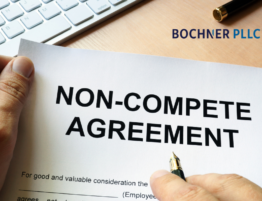
A common event in the career of any in-house Intellectual Property manager is the acquisition of Intellectual Property from other corporate entities or inventors. These include either purchasing or licensing of their intellectual property. Therefore, all Intellectual Property managers should have a formal patent, trademark and trade secret due diligence process. This article will focus on the patent due diligence process and we will address the trademark and trade secret due diligence process in future Blogs.
Patent Due Diligence has 7 key steps that will allow you to evaluate and quantify the opportunity.
- Research
- The first task is to perform research which focuses on the opportunity and helps you quantify if the opportunity is consistent with the company’s current business or anticipated future business.
-
-
- An example is that your company makes Injection molded chairs of Polyethylene Terephthalate (PET). However, the management of the company sees an unmet need in the area of plastic wicker furniture. Therefore, you would categorize the business needs into these two areas existing products and future products and any patents would be segregated into the current product or future product categories.
-
-
- Ensure that the organization sees the benefit to the patents. What if marketing supports the idea but R&D does not. Get buy in from all the stake holders.
- The first question that needs to be answered is the jurisdiction of the patent. Is it a U.S. patent only or are there related foreign patents? Are any of the patents currently being prosecuted? You will need to document the jurisdictions and status covered by the patent(s) so that you can include these with the analysis.
- The next questions is what is the remaining term of the patent and how long would the patent be a benefit to the company. You will need to document the expiration dates and the maintenance fees dates so that you can include these with the analysis.
- The next step is obvious but we need to document it. You need to check that the current owner is current with all maintenance fees. If they are not current then the patent has been abandoned and there is no need to continue with the analysis.
- Next one must look at the patent history and determine if the patents are subject to any encumbrances such as being subject to a terminal disclaimer, third party agreements, assignment agreements, licensing agreements, inventor agreements, collaboration agreements, royalty agreements, R&D agreements, etc. If there are any such agreements then you should document them and secure copies of the agreements so you can analysis the affect that the agreement will have on the value of the patent to your organization. Check to determine if the patent is subject to joint ownership, technology transfer, royalties, etc. Check the terms of any licenses and if the licenses are exclusive or nonexclusive license? You will need to document all licenses and encumbrance and conduct a detail review the impact with your organization and team.
- An important issue is whether the patent(s) have been challenged or subject to any litigation. You need to document any challenges and secure copies of the litigation so you can analysis the affect that the challenge will have on the value of the patent to your organization.
- Another important evaluation is the evaluation of the claims to ensure the claims are strong and defendable. If the claims are narrow and can be circumvented or invalidated then the patent does not have as much value as a patent with claims that are broad and defendable. Also, you should evaluate the possibility of infringement which can be either that the patents cannot be practiced without infringing on another patent or is a competitor using the invention without a license.
While this list is extensive following it will reduce the chances that you purchase a patent which is useable or does not adds value to the organization. Visit our website for more information regarding Patent Acquisition! www.stantoniplaw.com








